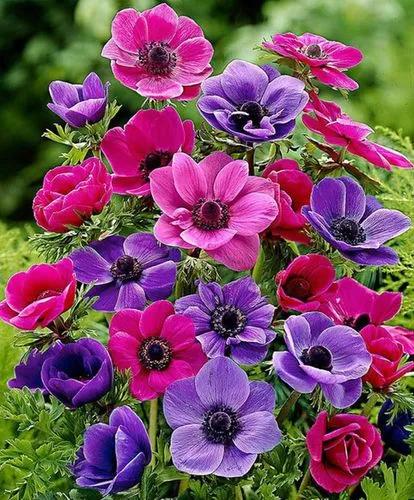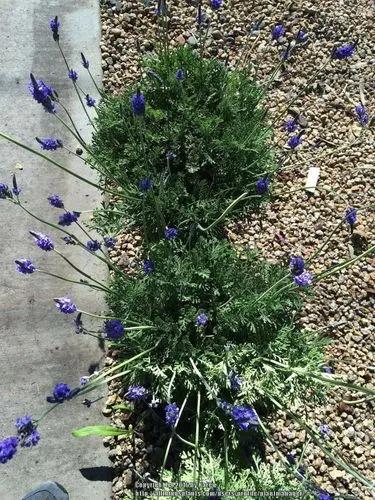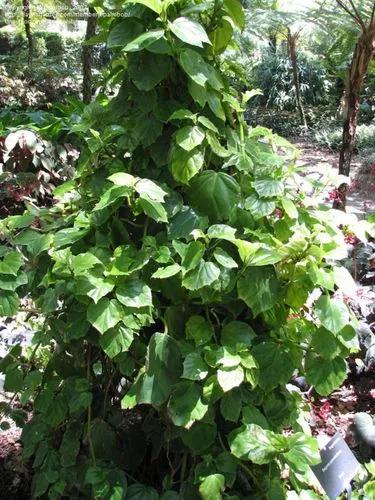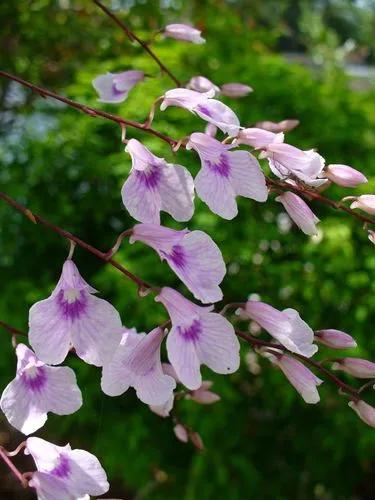Add a touch of elegance to your garden with the Peach-Leaved Bellflower! Known for its charming clusters of star-shaped blooms, this easy-to-care-for perennial will transform your space into a floral wonderland.
Peach-Leaved Bellflower Care
Campanula persicifolia



The Peach-Leaved Bellflower (Campanula persicifolia) is a perennial from the Campanulaceae family. Native to Europe and Western Asia, it boasts elegant bell-shaped flowers in blue, violet, or white. Growing 20 to 40 inches tall (50 to 100 cm), it blooms from late spring to midsummer. Its narrow, lance-shaped leaves resemble peach tree leaves, inspiring its name. Ideal for borders and rock gardens, this hardy plant thrives in well-drained soil and full sun to partial shade.
How to Care for the Plant

Water

Water regularly, keeping the soil consistently moist but not soggy. Be sure to modify your watering schedule according to the weather.

Pruning

Regularly deadhead spent flowers to promote continued blooming. Cut back the plant in late fall to tidy up and prepare it for dormancy.

Fertilizer

Feed your bellflower with a balanced, slow-release fertilizer once a month during the growing season (spring to early summer). This will encourage healthy growth and abundant blooms.

Sunlight

This plant enjoys full sun to partial shade. Ideally, it should receive at least 4-6 hours of sunlight daily. In hotter climates, provide some afternoon shade to protect the plant from intense heat and prevent leaf scorch.

Soil

This plant thrives in well-draining soil that's slightly acidic to neutral (pH 6.0-7.5). A mix of garden soil, compost, and a bit of sand or perlite works well.

Propagation

You can propagate Campanula persicifolia through division or seeds. For division, separate the plant into smaller sections in early spring or fall and replant them. For seed propagation, sow seeds in spring, either directly in the garden or in seed trays. Keep the soil moist and warm until germination occurs.

Temperature

Ideal growing temperatures range from 60-85°F (15-29°C) in summer. In winter, it can tolerate down to 25°F (-4°C) but should be protected from severe frost.

Container

When growing Peach-Leaved Bellflower in a container, choose one that’s at least 12 to 16 inches (30 to 40 cm) deep and wide, with proper drainage holes to prevent waterlogging. As far as pot materials go, terracotta, ceramic, or plastic are all good choices.

Fun fact

The Peach-Leaved Bellflower has edible flowers that are sometimes used as a decorative touch in salads and desserts. They add a subtle, sweet flavor and a pop of color to dishes.

Popularity

20 people already have this plant 3 people have added this plant to their wishlists

Common pests

Campanula persicifolia can sometimes attract pests like aphids, slugs, snails, spider mites, thrips, and whiteflies. To keep your plant healthy, use insecticidal soap or neem oil to manage aphids, spider mites, thrips, and whiteflies. For slugs and snails, try copper barriers or slug bait, and remove them by hand if needed. Regularly check your plant and take action early to prevent pest problems.

Frequent diseases

The plant can be susceptible to fungal diseases such as powdery mildew and rust, especially in humid conditions. To prevent these, ensure good air circulation around the plant and avoid overhead watering.

Botanist’s tips

- Use stakes or plant supports if the stems grow tall and become top-heavy with flowers.
- Divide the plants every 3-4 years in early spring or fall to maintain vigor and prevent overcrowding.
- Peach-leaved Bellflower can self-seed and spread in your garden. To control its spread, deadhead the flowers before they go to seed.
Discover more plants with the list below
Popular articles






